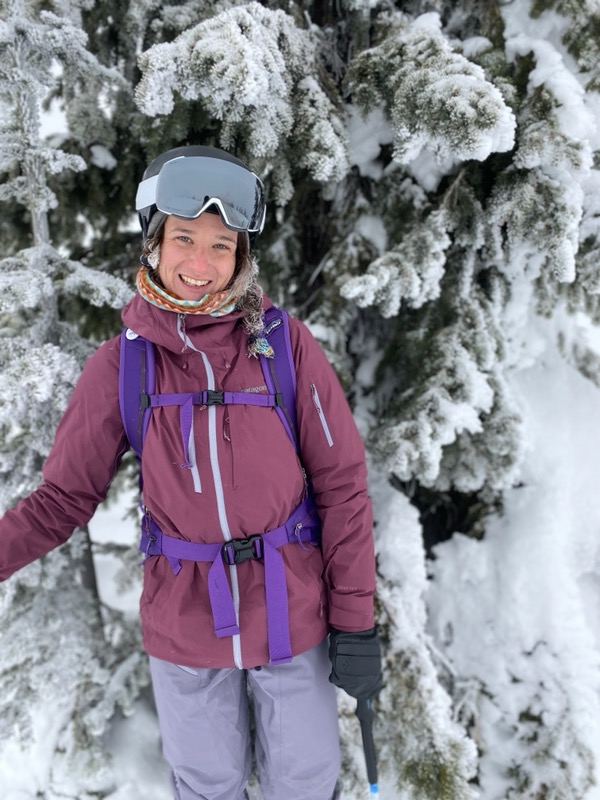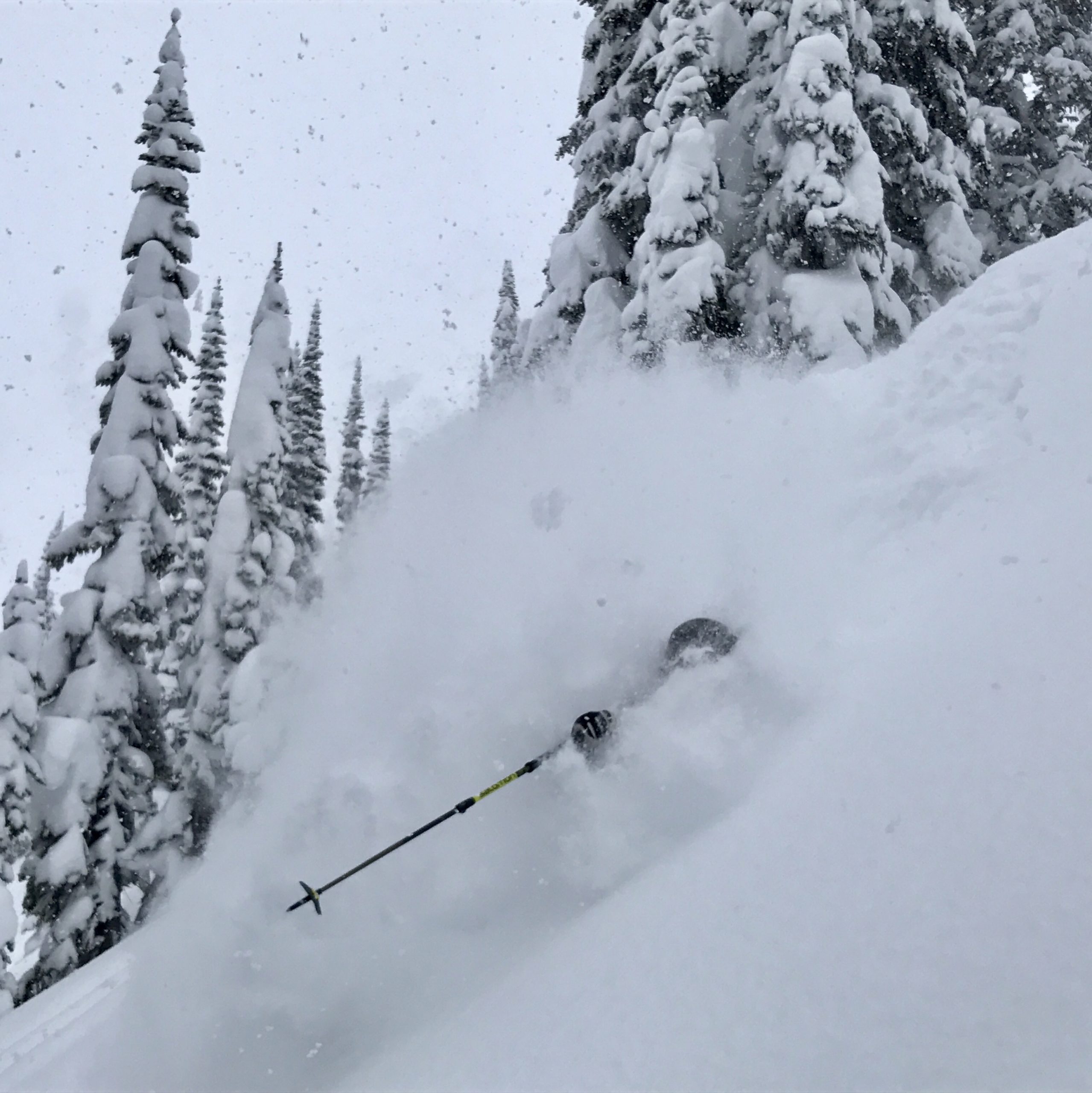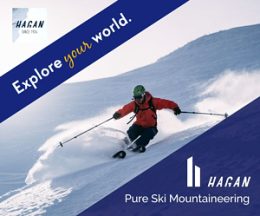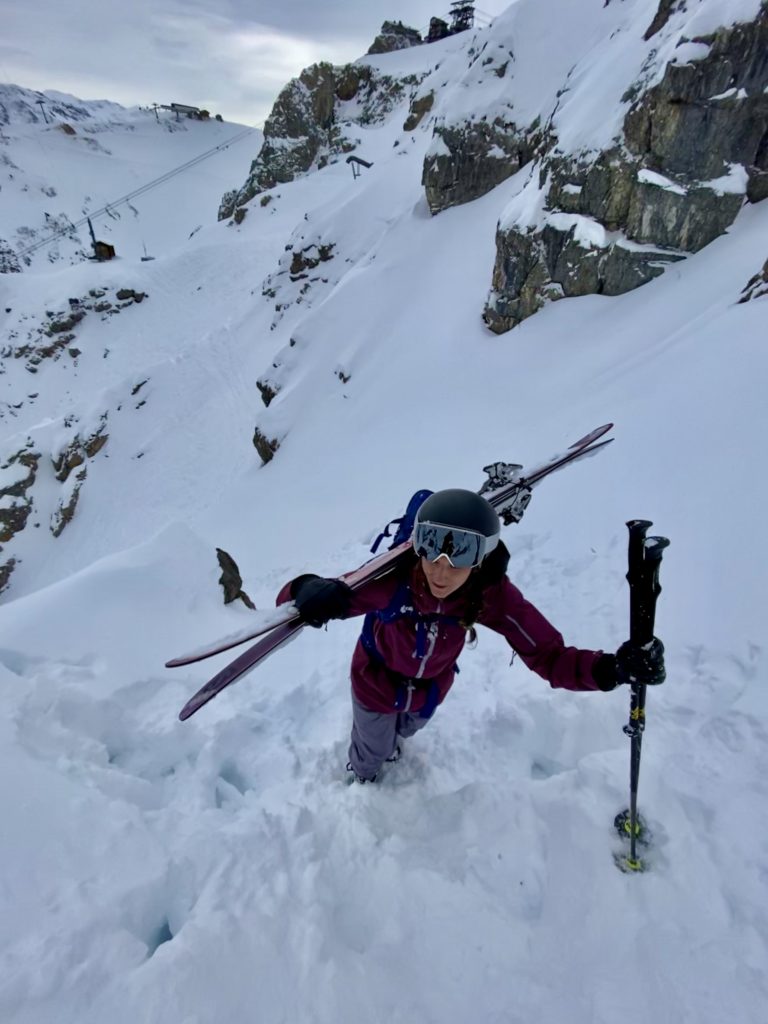How Leah Evans Brought the Stoke to Revy
Leah Evans, a pro skier based in Revelstoke, B.C., is one of the most humble people on the planet. She is also one of the women responsible for Revelstoke becoming the epicenter for lady shredding (if you don’t follow The Blondes on Instagram, you should probably question what you’ve been doing with your life). Twelve years ago, when she was only 19 years old, Evans founded Girls Do Ski, a female-specific backcountry clinic for girls and women of all ages, and Revy’s community of hard-charging women has been growing steadily ever since. We caught up with her over the phone recently to ask her questions about the one thing she’s probably not super comfortable discussing—herself. This is what she had to say.

Powder Cloud: You grew up skiing at Red Mountain. Who were some of your early influencers?
Leah Evans: My parents took me skiing every weekend. I went through the Nancy Greene racing program. Steph Gauvin, who was in the original “Sinners” ski film, was one of my coaches and she encouraged me to keep skiing and go further in racing. I never had a lack of influences. I watched every Sarah Burke movie ever. There was Meg Oster from The North Face team throwing 180s off every cat track, and I always aspired to ski with her. And Ingrid [Backstrom] was coming up at that time too. It wasn’t until I was later in my teens that I felt like I had a lack of girls to ski with who were my age.
PC: How does it feel to now be the role model?
Evans: I think it’s part of what I’m supposed to do in life. It’s important to create space for different girls and women within the sport and to be that person who’s like, “Hey I believe in you.”
PC: What do you see as being the formative age for girls to learn these skills?
Evans: I have done a lot of research around nature deficit disorder, which is basically all about getting kids in nature before age 12. Age 12 is really intense for girls as well. If you don’t get exposed, you may not be comfortable in the future and you may not appreciate that connection. Girls who start later will have more hurdles.

PC: What do you see as the biggest takeaway that girls and women get from your camps?
Evans: Confidence and believing 100 percent in themselves. We will be our own worst enemies. I don’t know how many times I’m like, “I need this much speed to jump this cliff,” and I get halfway there and do a turn and then wonder why I did that. We allow girls and women to break down their personal boundaries in a safe controlled manner.
PC: How do you do that?
Evans: I help make people feel comfortable, welcome, and encouraged. If I am the coach, I can spot if someone’s nervous. I am in tune with women’s emotions when skiing, and I support them through their turns if they’re at the point when they’re in doubt. I try to get them through the doubt that is stopping them.
PC: What are the signs you see when someone is nervous?
Evans: A lot of it is body language—I just see them retract. Or sometimes people stop talking or talk a lot. It’s just a feeling I get as well. Then we go through Maslow’s hierarchy of needs and come to a place where they feel confident and secure. You have to meet them in their journey, because not everyone is going to show up at the same place.

PC: Why did you start Girls Do Ski?
Evans: I just wanted a space where women could connect. I wanted to create a multigenerational community and celebrate skiing.
PC: The ski industry has come a long way in including women. But where is there room for growth?
Evans: I think extending the community is huge. You see a lot of white faces within skiing, and there is a lot of privilege with that. We had a female donor who created a scholarship this year. She’s a hero. We got to sponsor three girls who wouldn’t have otherwise had the means to do a camp. That was eye opening because we got close to 100 applicants for it. I want to open our network and our accessibility, to diversify, and figure out how to support different generations of female skiers, too.
PC: Revy is such a hotbed for female skiers right now. Thirty percent of all female ACMG guides are based there—an incredible proportion considering the town’s population is 6,700. What’s the scene like?
Evans: It’s so awesome. There are so many bad-ass women. Everyone from students to ski bums to pros—there are 20 girls I can call who are at my same skill level. It’s been really cool to see the level of female skiing rise, and to be able to support a new generation of girls coming up. It helps that we have a lot of access to working avy pros and guides who improve our mountain craft. It’s also been so fun to see it so normalized—you’ll see four girls out touring with one guy and you don’t even think twice about it. I always have to remind myself that it’s not like this in other places. My perspective of the world has changed so much by living here that I assume the female ski community is so strong everywhere.




